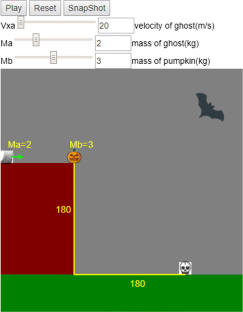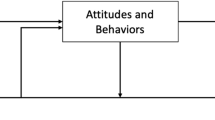Abstract
This study investigated students’ modeling progress and strategies in a problem-solving simulation game through content analysis, and through supervised and unsupervised lag sequential analysis (LSA). Multiple data sources, including self-report models and activity logs, were collected from 25 senior high school students. The results of the content analysis found that the problem-solving simulation game helped most of the students to reflectively play with the science problem and build a workable model to solve it. By using the supervised LSA, it was found that the students who successful solved the game frequently linked the game contexts with the physics terminologies, while those who did not solve the problem simply relied on the intuitive knowledge provided in the reference materials. Furthermore, the unsupervised LSA identified four activity patterns that were not noticed in the supervised LSA: the fragmented, reference material centered, reference material aided modeling, and modeling centered patterns. Each pattern has certain associations with certain problem-solving outcomes. The results of this study also shed light on the use of different analytics techniques. While the supervised LSA is particularly helpful for depicting a contrast of activity patterns between two specific student groups, the unsupervised LSA is able to identify hidden significant patterns which were not clearly distinguished in the pre-defined student groups. Researchers may find these analytics techniques useful for analyzing students’ learning processes.





Similar content being viewed by others
References
Bakeman, R., & Gottman, J. M. (1997). Observing interaction: An introduction to sequential analysis (2nd ed.). New York: Cambridge University Press.
Bamberger, Y. M., & Davis, E. A. (2013). Middle-school science students’ scientific modelling performances across content areas and within a learning progression. International Journal of Science Education, 35(2), 213–238.
Baum, L. E., & Petrie, T. (1966). Statistical inference for probabilistic functions of finite state Markov chains. The Annals of Mathematical Statistics, 37(6), 1554–1563.
Campbell, T., & Oh, P. S. (2015). Engaging students in modeling as an epistemic practice of science: An introduction to the special issue of the Journal of Science Education and Technology. Journal of Science Education and Technology, 24(2–3), 125–131.
Chang, C.-J., Chang, M.-H., Chiu, B.-C., Liu, C.-C., Fan Chiang, S.-H., Wen, C.-T., et al. (2017). An analysis of student collaborative problem solving activities mediated by collaborative simulations. Computers & Education, 114, 222–235.
Chang, C. J., Liu, C. C., & Shen, Y. J. (2012). Are one-to-one computers necessary? An analysis of collaborative web exploration activities supported by shared displays. Educational Technology & Society, 15(4), 3–13.
Clark, D. B., Virk, S., Sengupta, P., Brady, C., Martinez-Garza, M., Krinks, K., … & Minstrell, J. (2016). SURGE’s evolution deeper into formal representations: The siren’s call of popular game-play mechanics. International Journal of Designs for Learning, 7(1), 107–146.
de Jong, T., & Van Joolingen, W. R. (1998). Scientific discovery learning with computer simulations of conceptual domains. Review of Educational Research, 68(2), 179–201.
Graesser, A. C., VanLehn, K., Rosé, C. P., Jordan, P. W., & Harter, D. (2001). Intelligent tutoring systems with conversational dialogue. AI magazine, 22(4), 39.
Hou, H. T. (2015). Integrating cluster and sequential analysis to explore learners’ flow and behavioral patterns in a simulation game with situated-learning context for science courses: A video-based process exploration. Computers in Human Behavior, 48, 424–435.
Hsu, C. Y., Tsai, M. J., Hou, H. T., & Tsai, C. C. (2014). Epistemic beliefs, online search strategies, and behavioral patterns while exploring socioscientific issues. Journal of Science Education and Technology, 23(3), 471–480.
Jeong, H., Gupta, A., Roscoe, R., Wagster, J., Biswas, G., & Schwartz, D. (2008). Using hidden Markov models to characterize student behaviors in learning-by-teaching environments. In International conference on intelligent tutoring systems (pp. 614–625). Berlin: Springer.
Lee, C. Y., & Chen, M. P. (2009). A computer game as a context for non-routine mathematical problem solving: The effects of type of question prompt and level of prior knowledge. Computers & Education, 52, 530–542.
Lee, S., & Kim, H. B. (2014). Exploring secondary students’ epistemological features depending on the evaluation levels of the group model on blood circulation. Science & Education, 23(5), 1075–1099.
Lin, P. C., Hou, H. T., Wu, S. Y., & Chang, K. E. (2014). Exploring college students’ cognitive processing patterns during a collaborative problem-solving teaching activity integrating Facebook discussion and simulation tools. The Internet and Higher Education, 22, 51–56.
Lisowska, K. M., Olbryt, M., Student, S., Kujawa, K. A., Cortez, A. J., Simek, K., … & Kupryjańczyk, J. (2016). Unsupervised analysis reveals two molecular subgroups of serous ovarian cancer with distinct gene expression profiles and survival. Journal of Cancer Research and Clinical Oncology, 142(6), 1239–1252.
Liu, C. C., Cheng, Y. B., & Huang, C. W. (2011). The effect of simulation games on the learning of computational problem solving. Computers & Education, 57(3), 1907–1918.
Liu, C. C., & Tsai, C. C. (2008). An analysis of peer interaction patterns as discoursed by on-line small group problem-solving activity. Computers & Education, 50(3), 627–639.
Louca, L. T., & Zacharia, Z. C. (2015). Examining learning through modeling in K-6 science education. Journal of Science Education and Technology, 24(2–3), 192–215.
Pedaste, M., & Sarapuu, T. (2014). Design principles for support in developing students’ transformative inquiry skills in Web-based learning environments. Interactive Learning Environments, 22(3), 309–325.
Quigley, D., Ostwald, J. L., & Sumner, T. (2017, March). Scientific modeling: using learning analytics to examine student practices and classroom variation. In LAK (pp. 329–338).
Rosyid, H. A., Palmerlee, M., & Chen, K. (2016). Deploying learning materials to game content for serious education game development: A case study. arXiv preprint arXiv:1608.01611.
Schuchardt, A. M., & Schunn, C. D. (2016). Modeling scientific processes with mathematics equations enhances student qualitative conceptual understanding and quantitative problem solving. Science Education, 100(2), 290–320.
Sengupta, P., & Clark, D. (2016). Playing modeling games in the science classroom: The case for disciplinary integration. Educational Technology, 56(3), 16–22.
Shen, J., Lei, J., Chang, H. Y., & Namdar, B. (2014). Technology-enhanced, modeling-based instruction (TMBI) in science education. In M. Spector, M. D. Merrill, J. Elen, & M. J. Bishop (Eds.), Handbook of research on educational communications and technology (pp. 529–540). New York: Springer.
Siemens, G., & Long, P. (2011). Penetrating the fog: Analytics in learning and education. EDUCAUSE Review, 46(5), 30.
Svoboda, J., & Passmore, C. (2013). The strategies of modeling in biology education. Science & Education, 22(1), 119–142.
Tan, J., & Biswas, G. (2007). Simulation-based game learning environments: building and sustaining a fish tank. In: Proceedings of the first IEEE international workshop on digital game and intelligent toy enhanced learning (pp. 73–80).
Tan, J. P. L., Caleon, I. S., Jonathan, C. R., & Koh, E. (2014). A dialogic framework for assessing collective creativity in computer-supported collaborative problem-solving tasks. Research & Practice in Technology Enhanced Learning, 9(3), 411–437.
Taub, R., Armoni, M., Bagno, E., & Ben-Ari, M. M. (2015). The effect of computer science on physics learning in a computational science environment. Computers & Education, 87, 10–23.
Wu, S. Y., Chen, S. Y., & Hou, H. T. (2015). A study of users’ reactions to a mixed online discussion model: A lag sequential analysis approach. International Journal of Human-Computer Interaction, 31(3), 180–192.
Yang, T. C., Chen, S. Y., & Hwang, G. J. (2015). The influences of a two-tier test strategy on student learning: A lag sequential analysis approach. Computers & Education, 82, 366–377.
Author information
Authors and Affiliations
Corresponding author
Rights and permissions
About this article
Cite this article
Wen, CT., Chang, CJ., Chang, MH. et al. The learning analytics of model-based learning facilitated by a problem-solving simulation game. Instr Sci 46, 847–867 (2018). https://doi.org/10.1007/s11251-018-9461-5
Received:
Accepted:
Published:
Issue Date:
DOI: https://doi.org/10.1007/s11251-018-9461-5




